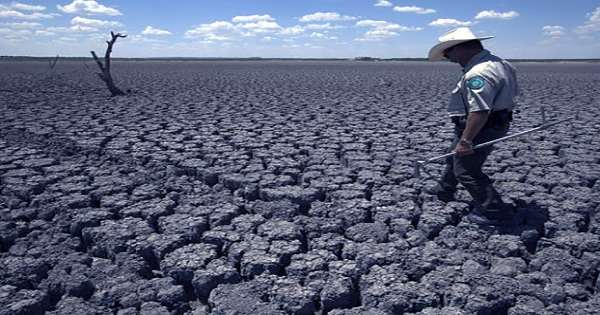Europe has experienced some summer drought in the last five years. Although the temperate climate of this continent has made them much lighter than other parts of the world, they were still probably the worst for nearly 2,000 years. Professor Ulf Büntgen of Cambridge University said in a statement, “We’ve been aware of our bunch of hot and dry summers over the last few years, but we needed a precise restructuring of our historical record to see how the recent finals were compared to the previous year.”
The width of the tree rings can famously used to determine the quality of past growing seasons but we can learn more from what they contain. In Nature Geoscience, Büntgen and colleagues looked for summer rainfall in the Czech Republic and southeastern Germany and measured the carbon and oxygen isotope ratio of 147 living and dead oak trees individually from each tree ring – a total ratio of 27,000.
The ratio of light to heavy carbon isotopes in the tree ring determined by the amount of photosynthesis that took place in the year that occurred, while the oxygen ratio depends on the amount of water pressure the plant has experienced. Combined, these provide a more sophisticated measure of seasonal conditions than just ring width. Samples of both living and dead trees were taken – the oldest being Julius Caesar before invading Britain – 2110 years ago, representing an average of 7.2 trees per year.
“In general, our understanding is even worse that we are going back in time, because datasets are rare given the situation of past droughts.” Although geographically limited, this sample included many data points from the pre-medieval period. It is an important addition to our knowledge of the long-term European climate and matches well with instrumental records in recent years. Büntgen and co-authors have found some extreme examples of dry summers in the region, matching the most well known records of droughts, which sometimes change the course of history.
Yet 2016-18 had three out of five dry years in the entire period. “We’ve seen a sharp decline after centuries of slow, significant erosion, which is particularly worrying for agriculture and forestry,” said Professor Mirek Trnka, co-author of the CzechGlobe Research Center. Although the trend in one part of Europe does not necessarily indicate that it is happening elsewhere, Trnka noted, “Unprecedented forest diebacks in most parts of Central Europe prove our results.”
It will be very difficult to find out what the situation was like in the previous millennium, most of the samples have removed. Nonetheless, at least it is possible that Central Europe only suffered its driest series of summers since the last ice age. Büntgen’s discoveries are another sign that the recent climate of the world is beyond the steps of the conditions under which civilization has developed.
Gulf streams, whose warm waters keep the climate of northern Europe comfortable, have now been weak evidence for more than a thousand years. “Climate change does not mean that it will become drier everywhere: some places may become colder or colder, but extreme conditions will become more frequent, which can be devastating for agriculture, the ecosystem and society as a whole,” Büntgen said.















